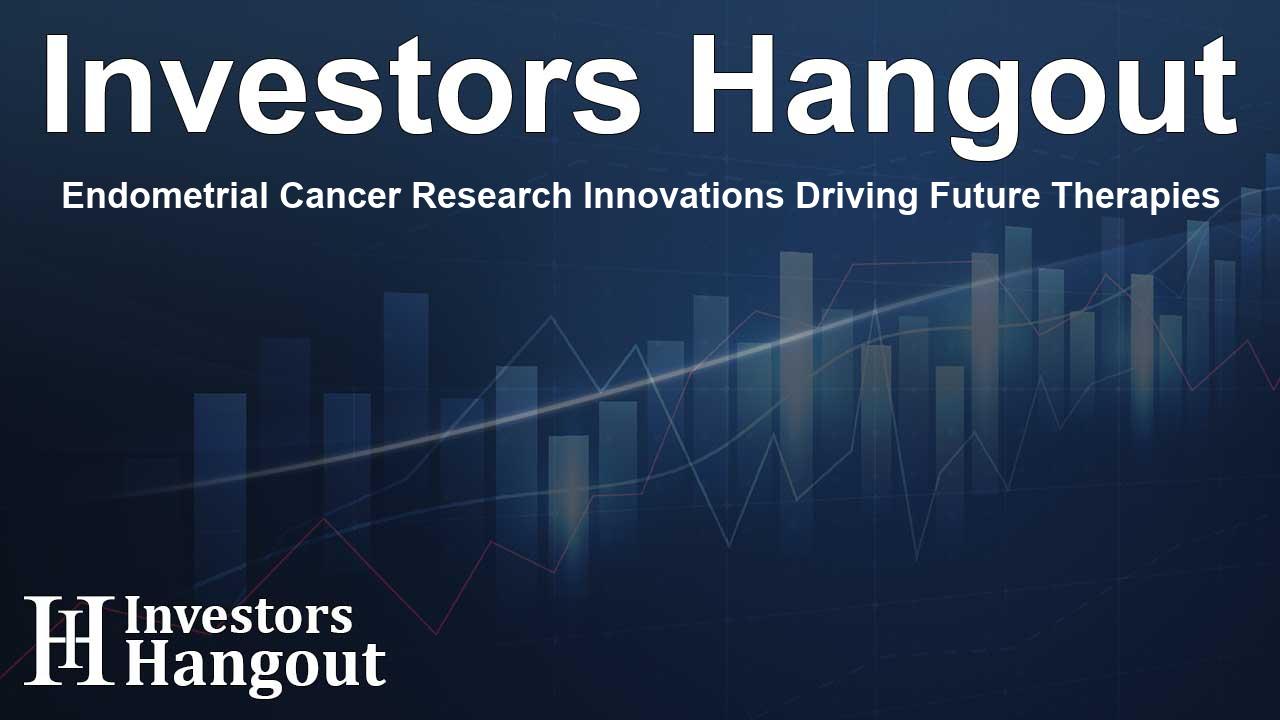Endometrial Cancer Research Innovations Driving Future Therapies

Innovative Developments in Endometrial Cancer Treatment
Endometrial cancer is a serious condition that arises from the lining of the uterus and is most prevalent among postmenopausal women. The surge in this disease correlates with rising obesity rates and an aging population. Fortunately, advancements in targeted therapies and improved early diagnostics are boosting the treatment landscape and market growth for endometrial cancer.
Understanding the Current Pipeline Landscape
DelveInsight’s comprehensive report on the endometrial cancer pipeline highlights more than 50 companies with over 55 drugs in different stages of development, aiming to bring innovative therapies to market. The report showcases the tireless efforts of prominent pharmaceutical companies that are redefining treatment strategies and enhancing the future prospects for patients battling this disease.
Key Insights from the Endometrial Cancer Pipeline Report
- Active Players: This report indicates a thriving sector where 50+ companies are actively working on endometrial cancer treatments.
- Leading Companies: Notable organizations such as Eli Lilly and Company, Karyopharm Therapeutics, and Compugen are among those investigating new therapeutic options that show potential to substantially improve patient outcomes.
- Promising Therapies: Noteworthy drugs currently in development include Selinexor, Abemaciclib, and Envafolimab, which are progressing through various phases of clinical trials. These therapies are expected to play a crucial role in the changing treatment landscape.
- Recent Milestones: In recent months, exciting developments have emerged, such as clinical trials involving Enhertu as a combination treatment for advanced endometrial cancer, which point to a significant evolution in early treatment approaches.
- Future Directions: The report also explores upcoming collaborations and therapeutic partnerships that are set to enhance research and development in the realm of endometrial cancer.
A Comprehensive Overview of Endometrial Cancer
What makes endometrial cancer particularly concerning is that it is the most common gynecologic cancer in developed countries, and its incidence continues to rise. Predominantly influencing older women, the tell-tale signs often include abnormal uterine bleeding, which leads to earlier diagnosis and typically better prognoses.
Several contributing factors have been identified, including obesity, diabetes, and metabolic syndrome, which can lead to an elevated risk of developing this cancer. Specifically, obesity is responsible for approximately 40% of cases. Additionally, reproductive history and genetic predispositions such as Lynch syndrome can heighten susceptibility.
Path to Diagnosis and Treatment Options
Diagnosis of endometrial cancer typically starts with an endometrial biopsy, often following imaging studies like transvaginal ultrasound. While ultrasounds are useful, there can be limitations, especially in marginalized populations; thus, biopsies are crucial for conclusive results.
Treatment modalities vary based on the stage of cancer. Early-stage cases may involve total hysterectomy and bilateral oophorectomy, whereas advanced stages might necessitate a combination of therapies including chemotherapy and newer immunotherapy options. Trials have shown promising results for the combination of dostarlimab with traditional chemotherapeutics, enhancing survival rates and leading to more tailored treatment paths.
Future Perspectives in Endometrial Cancer Treatment
Research in the field of endometrial cancer is continuously evolving. Companies are investing in understanding disease mechanisms and patient needs, leading to more effective treatments. As emerging drugs and collaborations surface, the horizon for endometrial cancer therapeutics looks promising.
Through aggressive clinical trials and an increasing number of innovative therapies entering the pipeline, patients may soon see a broader array of effective treatment options tailored to their individual needs. With dedication from various pharmaceutical companies, including Eli Lilly and Company, the landscape is set for substantial changes that can lead to improved health outcomes for women suffering from endometrial cancer.
Frequently Asked Questions
What is endometrial cancer?
Endometrial cancer is a type of cancer that forms in the lining of the uterus and is most common in postmenopausal women.
What are the leading companies in endometrial cancer research?
Prominent companies include Eli Lilly and Company, Karyopharm Therapeutics, and Compugen, among others.
What treatments are available for endometrial cancer?
Treatments can include surgery, chemotherapy, radiation, and new therapies like immunotherapy.
How is endometrial cancer diagnosed?
Diagnosis typically involves an endometrial biopsy and may be preceded by imaging tests like transvaginal ultrasound.
What is the future of endometrial cancer treatment?
The future includes new therapies under investigation and collaborations among pharmaceutical companies that promise to enhance treatment options.
About The Author
Contact Logan Wright privately here. Or send an email with ATTN: Logan Wright as the subject to contact@investorshangout.com.
About Investors Hangout
Investors Hangout is a leading online stock forum for financial discussion and learning, offering a wide range of free tools and resources. It draws in traders of all levels, who exchange market knowledge, investigate trading tactics, and keep an eye on industry developments in real time. Featuring financial articles, stock message boards, quotes, charts, company profiles, and live news updates. Through cooperative learning and a wealth of informational resources, it helps users from novices creating their first portfolios to experts honing their techniques. Join Investors Hangout today: https://investorshangout.com/
The content of this article is based on factual, publicly available information and does not represent legal, financial, or investment advice. Investors Hangout does not offer financial advice, and the author is not a licensed financial advisor. Consult a qualified advisor before making any financial or investment decisions based on this article. This article should not be considered advice to purchase, sell, or hold any securities or other investments. If any of the material provided here is inaccurate, please contact us for corrections.
